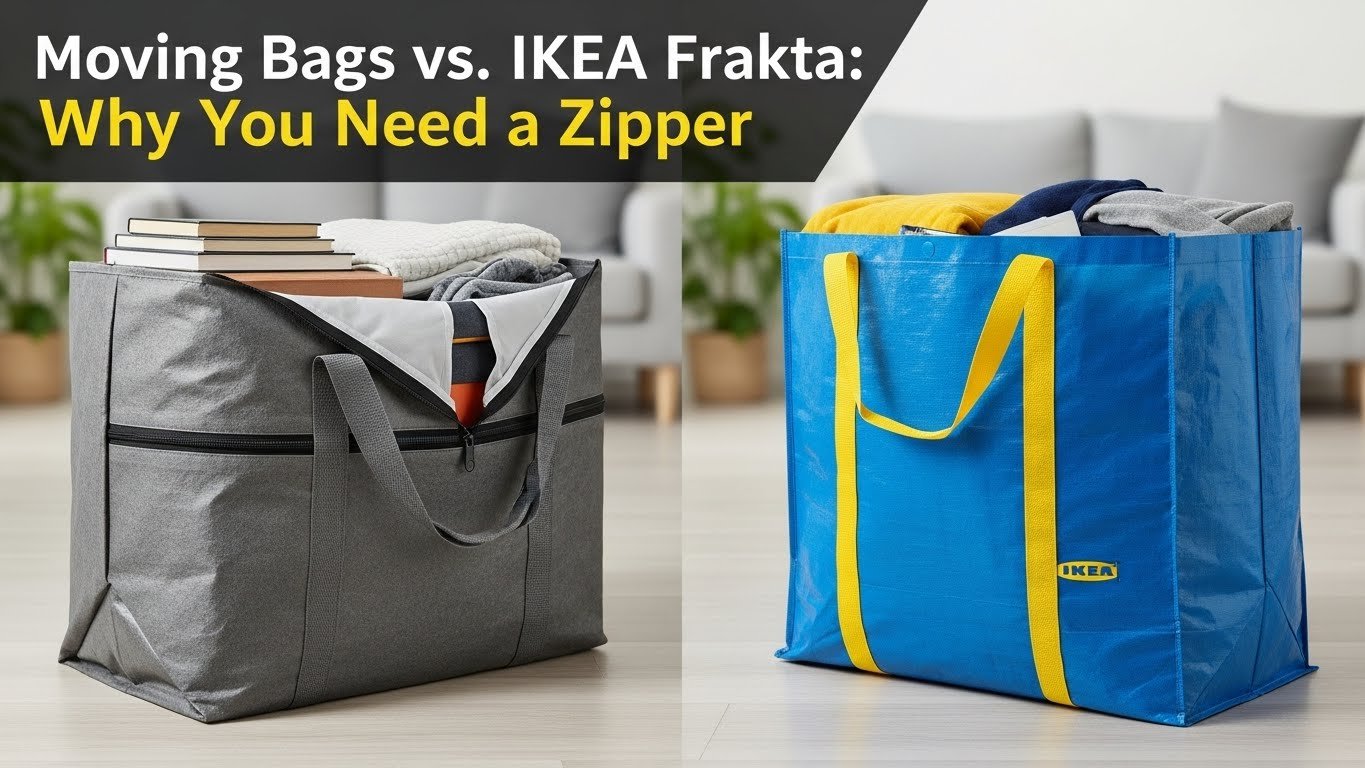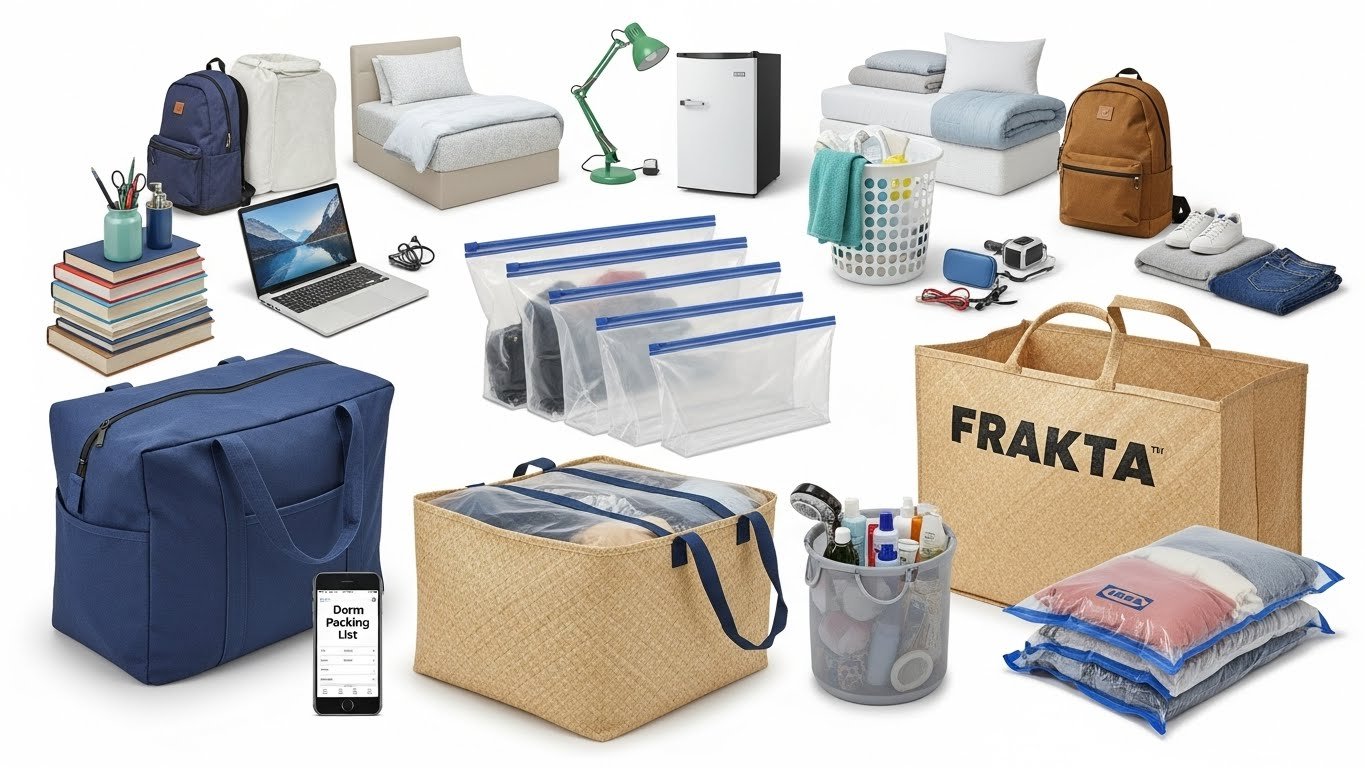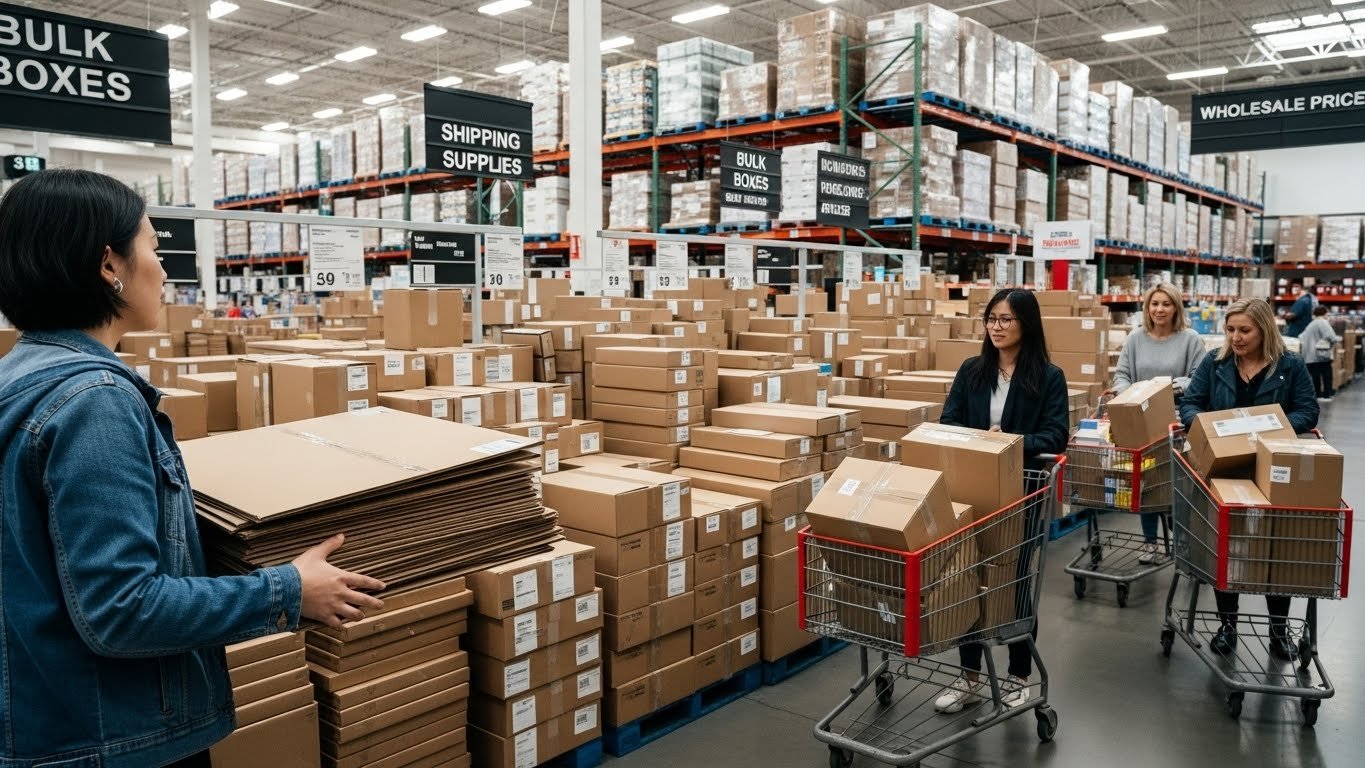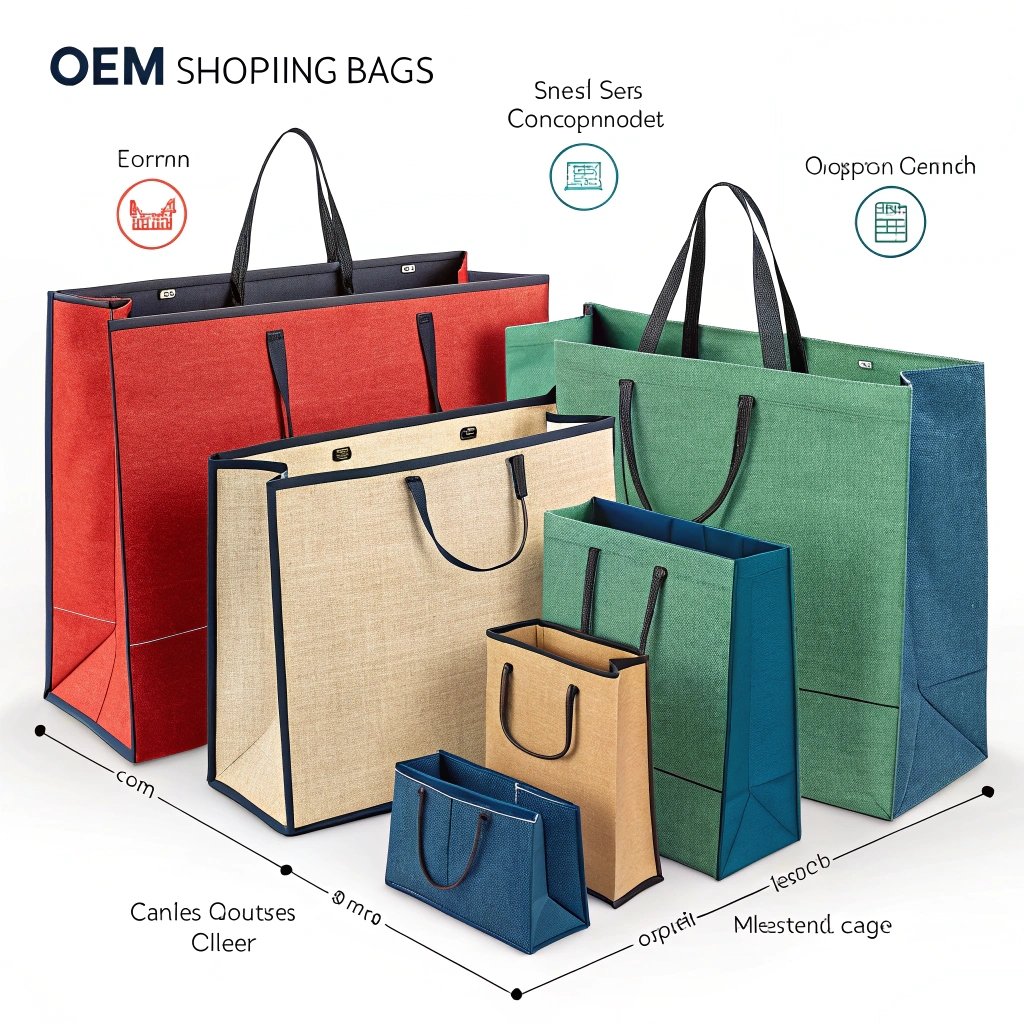
Problem: You need shopping bags perfectly tailored to your products, but you worry your supplier can’t meet precise size, material, or color needs.
OEM shopping bags1 can be fully customized in size, material, color, handle type, and structure to match your brand, product requirements, and customer expectations.
Keep reading to learn how to configure each element—size, eco materials, handles, and closures—for the perfect bag.
What Sizes Are Available for Custom Shopping Bags?
Do suppliers offer enough size flexibility—from mini gift bags to oversized retail carriers?
Yes. OEM factories can produce bags in virtually any size—from small 10 cm widths to extra-large 80 cm carriers—depending on your needs.
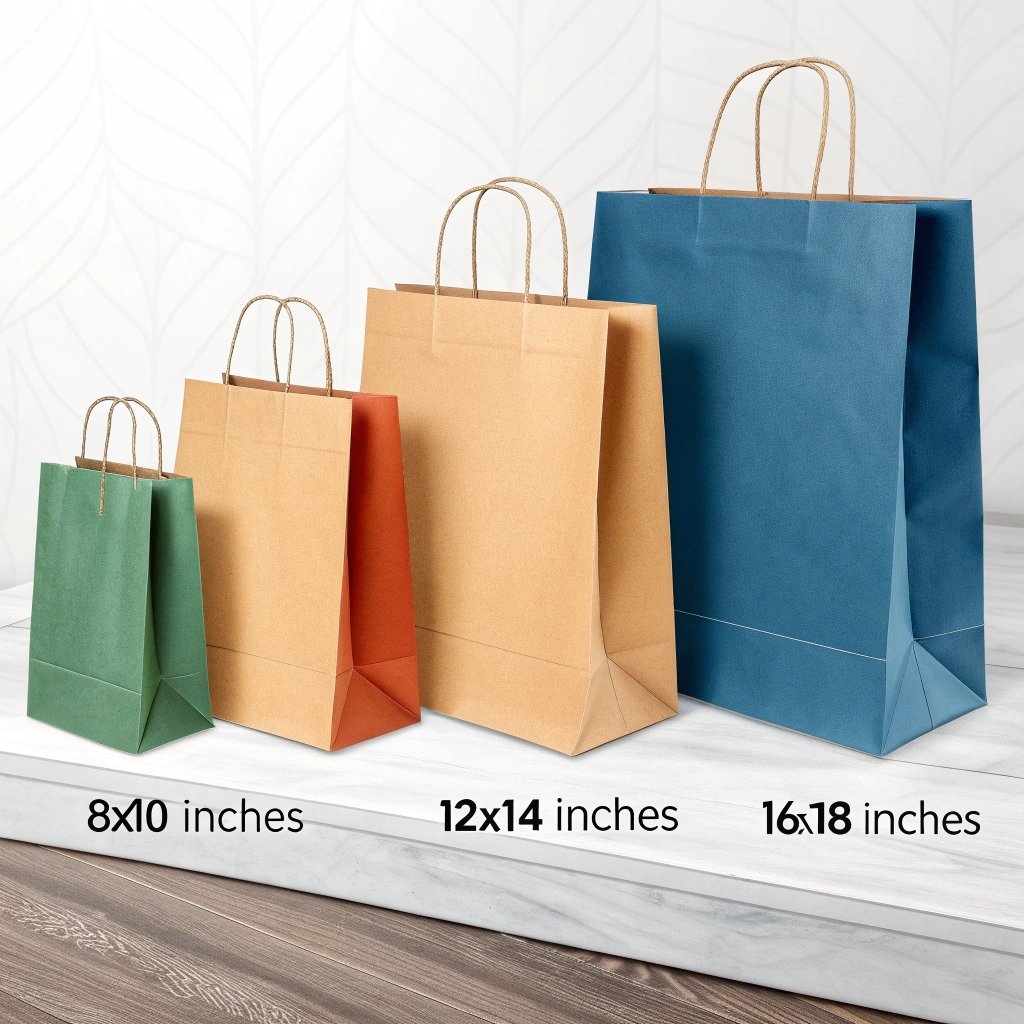
Leading the Way with Tailored Dimensions
I once worked with a fitness brand looking for a bag that could fit both a protein shaker and workout clothes. We crafted a 25 × 35 × 12 cm non‑woven bag—compact yet spacious enough for their needs.
Here’s how size impacts each stage2:
- Production cost: Larger bags use more material, raising cost.
- Shipping and storage: Oversized bags take more space; consider foldable designs.
- Brand visibility: Bigger bags offer more print area, boosting brand exposure.
- User comfort: A bag that’s too big or small for its contents may feel awkward.
Standard Custom Size Ranges
| Size Category | Dimensions (W×H×D cm) | Common Use Case |
|---|---|---|
| Mini | 10–15 × 15–20 × 5–8 | Jewelry, small gifts |
| Small | 20–25 × 25–30 × 6–10 | Cosmetics, accessories |
| Medium | 30–40 × 35–45 × 8–15 | Apparel, electronics |
| Large | 40–50 × 45–55 × 10–20 | Supermarket, bulk purchases |
| Extra-Large | Any above | Trade shows, heavy or bulky goods |
What’s the Difference Between Eco-Friendly and Regular Materials?
Are eco-friendly materials just gimmicks, or do they perform as well as traditional plastics?
Eco-friendly materials3—like RPET, non-woven PP, cotton, and kraft paper—offer recyclability, renewability, and a green brand message, often without sacrificing quality.
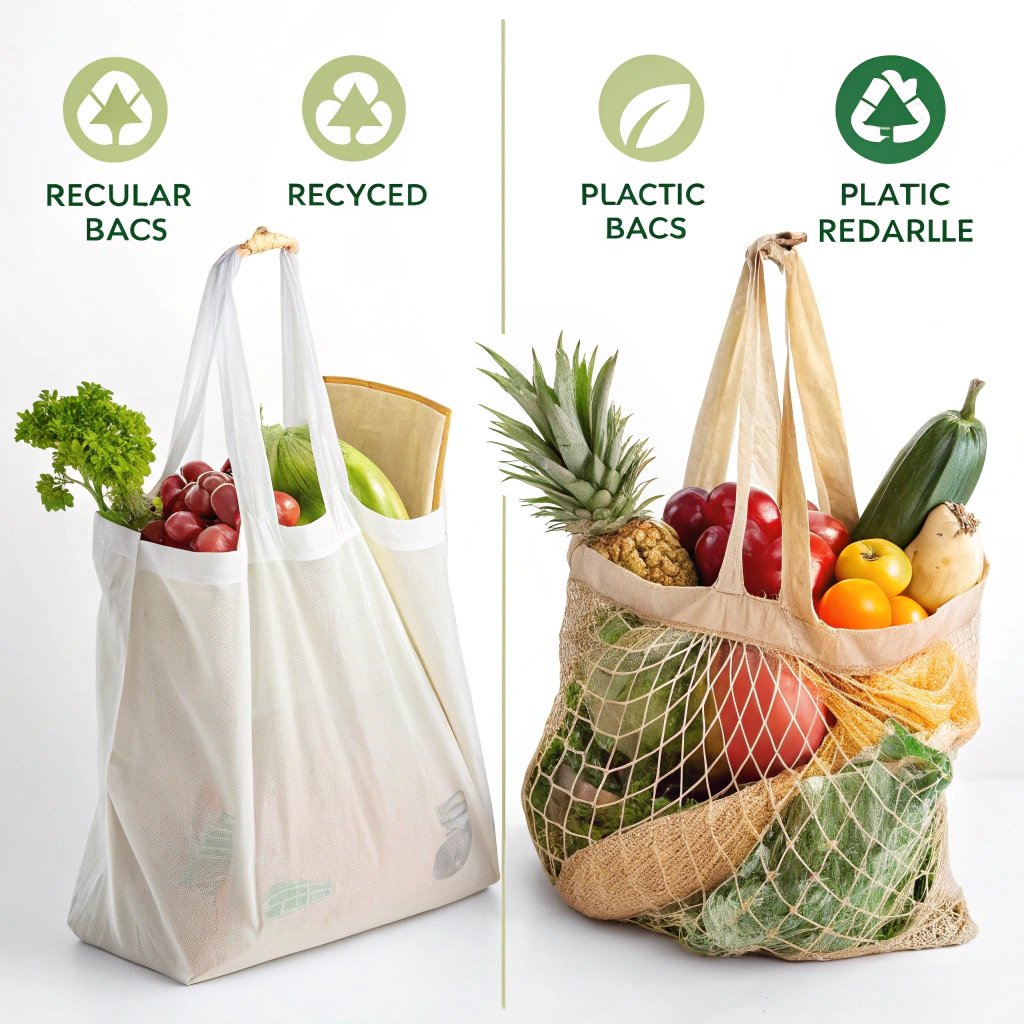
Comparing Materials: Environment, Cost, Quality
| Material | Eco | Strength | Print Quality | Cost Level | Recyclable/Reused |
|---|---|---|---|---|---|
| RPET | ✅ | High | Excellent | Medium | ✅ Yes |
| Non-Woven PP | ✅ | Moderate | Good | Low | ✅ with PP streams |
| Cotton | ✅ | Very High | Good | High | ✅ Yes |
| Kraft Paper | ✅ | Moderate | Excellent | Medium | ✅ Yes |
| PE Plastic | ❌ | High | Fair | Very Low | ❌ No (low demand) |
| LDPE Plastic | ❌ | Moderate | Fair | Low | ❌ No (rarely recycled) |
I recently helped a Canadian customer switch from LDPE plastic to RPET—raising their bag cost by 15%. But the eco upgrade gave them a marketing edge at trade shows and helped them secure a B2B contract requiring sustainability compliance4.
What Each Material Offers
-
RPET (Recycled PET):
- Best for brands focused on sustainability.
- Strong, with sharp, colorful prints.
- Recyclable and durable for reuse.
-
Non-Woven PP:
- Budget-friendly with decent print.
- Ideal for short-term use (events, giveaways).
- Recyclable where facilities exist.
-
Cotton Canvas:
- High-end, durable, washable.
- Great for lifestyle brands or reusable bag campaigns.
- Quite costly.
-
Kraft Paper:
- Natural look for eco or boutique brands.
- Good print, moderate cost.
- Biodegradable—great for food, retail.
-
PE/LDPE Plastics:
- Cheapest option for high-volume needs.
- Not eco-conscious—limited recyclability.
Can I Request a Specific Handle Type or Bag Structure?
Does ordering custom handles and structures complicate your order or raise costs too much?
No. Most OEM suppliers allow customization of handle types and structures5 (rope, die-cut, loop, shoulder strap) and structures (gussets, base inserts, zippers, closures).
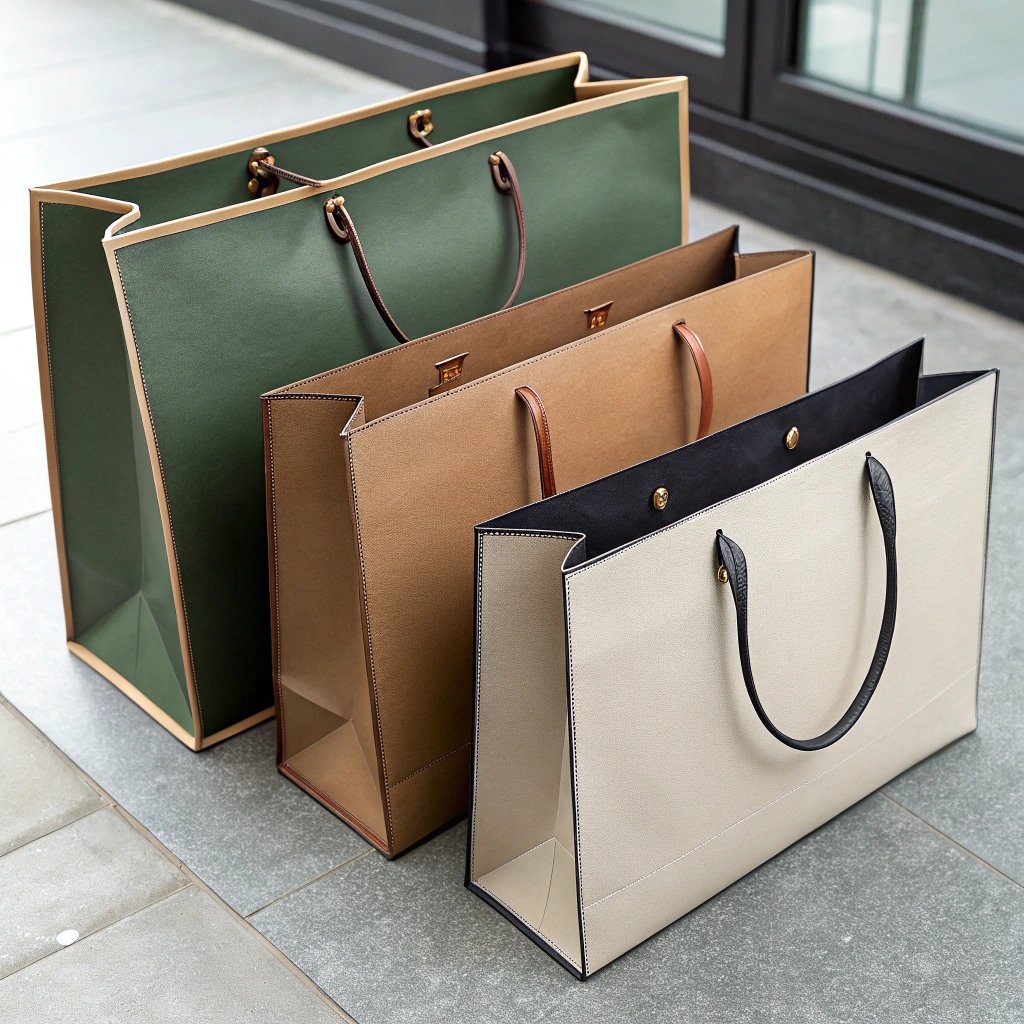
Mapping Handles and Structure to Use Cases
| Handle Type | Material Options | Recommended Use Case |
|---|---|---|
| Die-Cut | Paper or plastic | Flat-pack promos, low costs |
| Rope | Cotton, nylon, PP | Premium retail, gifting, luxury appearance |
| Loop Handle | PP or non-woven | Reusable grocery or retail bags |
| Shoulder Strap | Cotton, RPET | Heavier items, travel-friendly |
| Structure Feature | Description | Benefit |
|---|---|---|
| Gusseted Sides | Expandable side panels | More volume, holds bulkier items |
| Reinforced Base | Inserted cardboard bottom | Prevents sagging, maintains shape |
| Zip Closure | Full-zip top | Secure storage, privacy |
| Button/Velcro | Semi-close top | Easy opening, reusable |
| Folded/Dobo Top | Fold-over flap without closure | Sleek look, easy storage |
Tips for Choosing the Right Bag Configuration Based on Your Use Case
With so many options, how do you pick the best bag configuration for your needs?
Choose based on product type, distribution channel, audience, branding message, and budget6—then customize layer by layer.
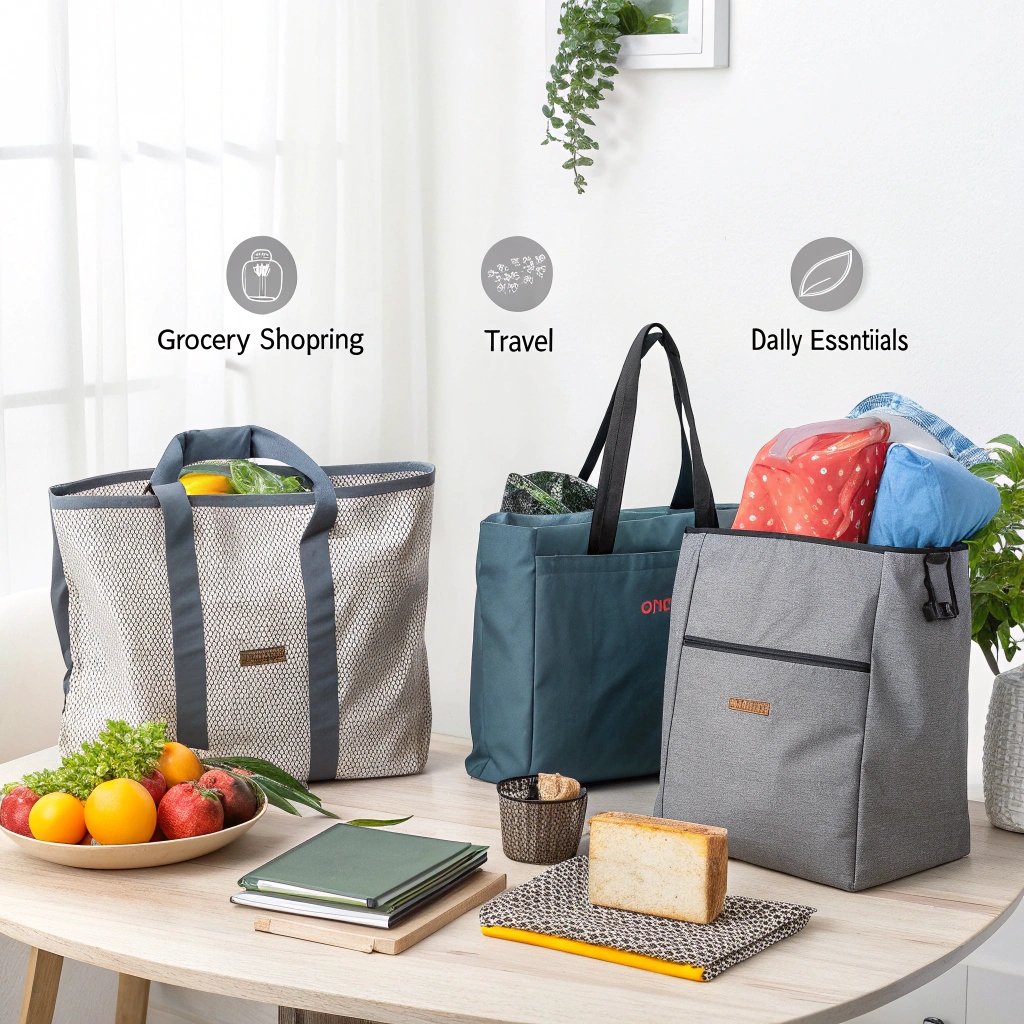
Step-by-Step Configuration Guide
- Define Your Use Case
- Choose Size and Volume Needs
- Pick Material
- Select Handles
- Decide on Structure and Closure
- Color, Printing, Branding
- Test Samples Before Bulk Order
Sample Configurations by Industry
| Industry | Use Case Example | Material | Size (cm) | Handle Type | Structure | Closure |
|---|---|---|---|---|---|---|
| Grocery/Market | Promotional goodie bag | Non-Woven PP | 45 × 50 × 15 | Loop Handle | Gusset + Reinforced Base | Open Top |
| Boutique Apparel | High-end gift bag | Kraft Paper | 25 × 30 × 10 | Rope Handle | Dobo Top, No Gusset | Folded |
| Fitness Apparel | Protein shaker + tee bag | RPET | 25 × 35 × 12 | Shoulder Strap | Gusseted + Base Insert | Open/Zip |
| Trade Show Promo | Lightweight promo bag | Non-Woven PP | 35 × 40 × 10 | Die-Cut | Flat, no gusset | Open |
| Restaurant Takeout | Eco takeout packaging | Kraft Paper | 40 × 30 × 12 | Paper Handle | Base Insert + Fold Top | Button |
Frequently Asked Questions
🎯 What’s the minimum order quantity for custom bags?
MOQ varies by supplier:
- Simple PP or kraft: ~5,000–10,000 pcs
- Premium cotton or custom prints: ~1,000–2,000 pcs
💰 How much does custom printing add to cost?
Extra colors and finishes (gloss/matte/foil stamping) can add 10–30% per bag, depending on complexity7.
⏳ What’s lead time?
- 15–25 business days for PP or kraft bags
- 25–35 days for fabric (cotton, RPET) due to knitting and dyeing steps
- Extra time for sample approval or printing delays
🔄 Can I alter config after a production run?
Minor tweaks (color, print positioning) are usually okay. Major changes (size, handle type) need a new sample run.
📏 Can I mix sizes in one container?
Yes, as long as minimums are met for each design. Combine small and large sizes in a full container to optimize shipping.
My Step-by-Step Checklist
- Clarify your bag’s primary purpose
- Measure product dimensions and weight
- Choose material based on branding and budget
- Pick handle type by user convenience
- Select necessary structure and closure features
- Choose colors and printing style
- Order a physical sample for testing
- Finalize packaging specs for bulk production
- Plan shipping & delivery logistics
- Reorder and scale after feedback
Conclusion
You absolutely can customize size, material, color, handles, structure, and closure to build a shopping bag that fits your brand and product. Set your budget, define your needs, test samples, and order through a trusted OEM supplier.
-
Understand the scope of OEM customization options for shopping bags in B2B manufacturing. ↩
-
Learn how size selection affects cost, logistics, and user satisfaction. ↩
-
See how eco-materials like RPET and kraft outperform traditional plastic for branding and sustainability. ↩
-
Real-world example of switching to RPET to win a sustainability-focused B2B client. ↩
-
Explore common handle types and bag structures and how to pick the right ones. ↩
-
Discover how to align bag configuration with branding, channels, and end use. ↩
-
Understand how printing finishes like foil or lamination impact cost and branding. ↩



